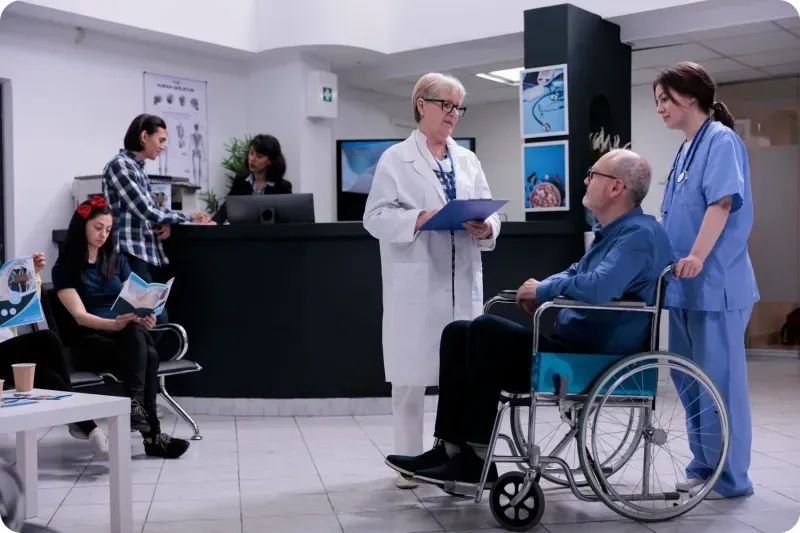A Cosmetic Industry at a Crossroads
In 2025, hair-transplant marketing isn’t about selling a look — it’s about communicating trust.

The Compliance Reality
The rules that apply to plastic surgeons now apply to hair-transplant clinics too.
If a procedure involves a medical device, anaesthetic, or prescription drug, it falls under the Health Practitioner Regulation National Law and Therapeutic Goods Act. That means:
- No testimonials or implied endorsements from patients.
- No “before-and-after” imagery without strict consent, identical conditions, and educational framing.
- No language promising outcomes (“guaranteed regrowth,” “full head of hair”).
- No inducements or discounts without full conditions disclosed.
AHPRA’s updated cosmetic-surgery guidelines (2023) even mention hair restoration specifically, warning against “misleading representations of expected results.”
We’ve seen clinics face ad removals, disapproved Google campaigns, and even complaints for using outdated influencer posts.
That’s why Square Meters Digital built a specialist compliance-screening process for every campaign in this field.
What Drives Success in 2025
1. Education Over Exaggeration
Patients researching transplants today are informed, analytical, and risk-aware. They want to know:
- What procedure type suits them (FUE vs FUT)?
- How long does recovery take?
- What are the potential complications?
Educational blogs and explainer videos consistently outperform emotional “transformation” ads.
For one Melbourne clinic, replacing a “New You in 30 Days” campaign with a content series titled “Understanding FUE Step by Step” doubled their lead quality while cutting ad-disapproval risk to zero.
Transparency is the new persuasion.
2. SEO Built Around Evidence
Search intent in this space has shifted dramatically.
Instead of “best hair transplant clinic Sydney”, users now search:
- “Is FUE painful?”
- “How many grafts for a receding hairline?”
- “Hair transplant recovery week by week.”
At Square Meters Digital, we structure entire SEO ecosystems around these evidence-driven questions. Each article is written with clinician oversight and includes citations from reputable medical sources.
The result: long-form authority content that ranks, educates, and converts — without ever breaching advertising law.
3. Visual Realism
Photography remains critical, but the era of glossy transformation grids is over.
Modern audiences — and regulators — expect honesty. That means:
- Real clinic photography.
- Unretouched scalp-close-ups only when consented and contextualised.
- Diverse representation (age, ethnicity, gender).
We call this clinical storytelling: showing process, not perfection.
The most successful campaigns now focus on journey documentation — technician precision, technology, care standards — rather than end results.
4. The Human Element
Behind every transplant is a decision tied to self-esteem.
Clinics that acknowledge that emotional context without exploiting it build far stronger brands.
Introducing the team — surgeons, nurses, trichologists — gives a face to the procedure and reminds patients that they’re placing trust in people, not machines.
We encourage clients to highlight:
- Qualifications and surgical affiliations.
- Patient-safety philosophy.
- Post-operative support programs.
Humanising medicine is the antidote to hype.
Channels That Work Safely
Google Search & Display
PPC still delivers the best ROI in this vertical when managed responsibly.
We craft ad copy that balances compliance and clickability:
“Registered medical team providing evidence-based hair-restoration solutions in Sydney.”
This phrasing passes both Google’s Healthcare & Medicines policy and AHPRA standards.
Every landing page mirrors that neutral tone — listing procedure details, risks, and consultation steps, not promises.
Our campaigns typically see 35–45 per cent higher approval rates than industry average because every ad is compliance-vetted before launch.
Social Media
Email and CRM Nurture
Hair-restoration decisions take months. That makes long-form educational nurture essential.
Our email sequences follow the stages of trust:
Understanding causes of hair loss.
Exploring treatment options (medical vs surgical).
Detailing consultation expectations.
Explaining recovery support.
Each message is calm, factual, and includes a clear opt-out — satisfying both the Spam Act 2003 and patient privacy expectations.
Common Pitfalls (and How We’ve Fixed Them)
1. The “Miracle Claim” Trap
Clinics often slip into promising results to differentiate from competitors.
We re-engineer those claims into verifiable statements:
❌ “Guaranteed natural regrowth.”
✅ “Procedures performed by registered surgeons using clinically validated techniques.”
The first invites complaints. The second builds confidence.
2. Misused Testimonials
Even if a patient volunteers a positive quote, publishing it about outcomes is illegal advertising.
We transform these into anonymised case studies reviewed by a clinician — educational, not promotional.
3. Over-automation
Chatbots and AI copywriters are now common, but unsupervised automation can easily generate non-compliant claims.
Every Square Meters Digital client using automation signs onto our Human-in-the-Loop review model — ensuring no AI-generated text reaches the public without professional oversight.
Privacy and Data Discipline
Hair-transplant enquiries often include photos or health information — making them protected data under the Privacy Act 1988.
We’ve audited clinics that unknowingly breached privacy by sending unencrypted consultation forms via email.
Our solution:
- End-to-end encryption.
- Consent language built into every form.
- Secure CRM storage compliant with Australian Privacy Principles.
Digital sophistication means nothing without data integrity.
Why Transparency Wins
The Square Meters Digital Advantage
We’re not a generic ad agency dabbling in healthcare. We’re specialists who understand the clinical, legal, and emotional dimensions of this field.
Our process for hair-transplant clinics includes:
- Comprehensive compliance audit (AHPRA + TGA + ACCC).
- SEO and content strategy built around evidence-based topics.
- Creative production following the “Authentic Frame” visual rule.
- Paid-media management under Google’s healthcare certification.
- Ongoing governance reviews every quarter.
We’ve guided clinics out of ad suspensions, rebuilt their online reputations, and delivered year-on-year enquiry growth — all while staying compliant.
Our philosophy is clear: compliance is not a barrier; it’s a brand asset.
Where the Industry Is Heading
The future of hair-restoration marketing will be defined by three forces:
- AI-Personalised Consultation Funnels – adaptive chatbots that triage enquiries responsibly.
- International Competition – Australian clinics competing with overseas “medical tourism” hubs must emphasise safety, follow-up care, and regulatory credibility.
- Patient-Wellbeing Messaging – regulators are encouraging clinics to address mental-health aspects of appearance change responsibly.
We’re already integrating these principles into campaigns — combining personalisation with ethics to future-proof our clients.
Final Word: Evidence Is the New Aesthetic
The hair-transplant industry has matured beyond vanity.
Today, success belongs to clinics that merge medical precision with human empathy — and agencies that can communicate both.
At Square Meters Digital, we’ve seen what happens when marketing crosses the line — and how powerful it becomes when it stays within it.
Because when evidence leads and transparency follows, patients don’t just see your brand.
They trust it.



